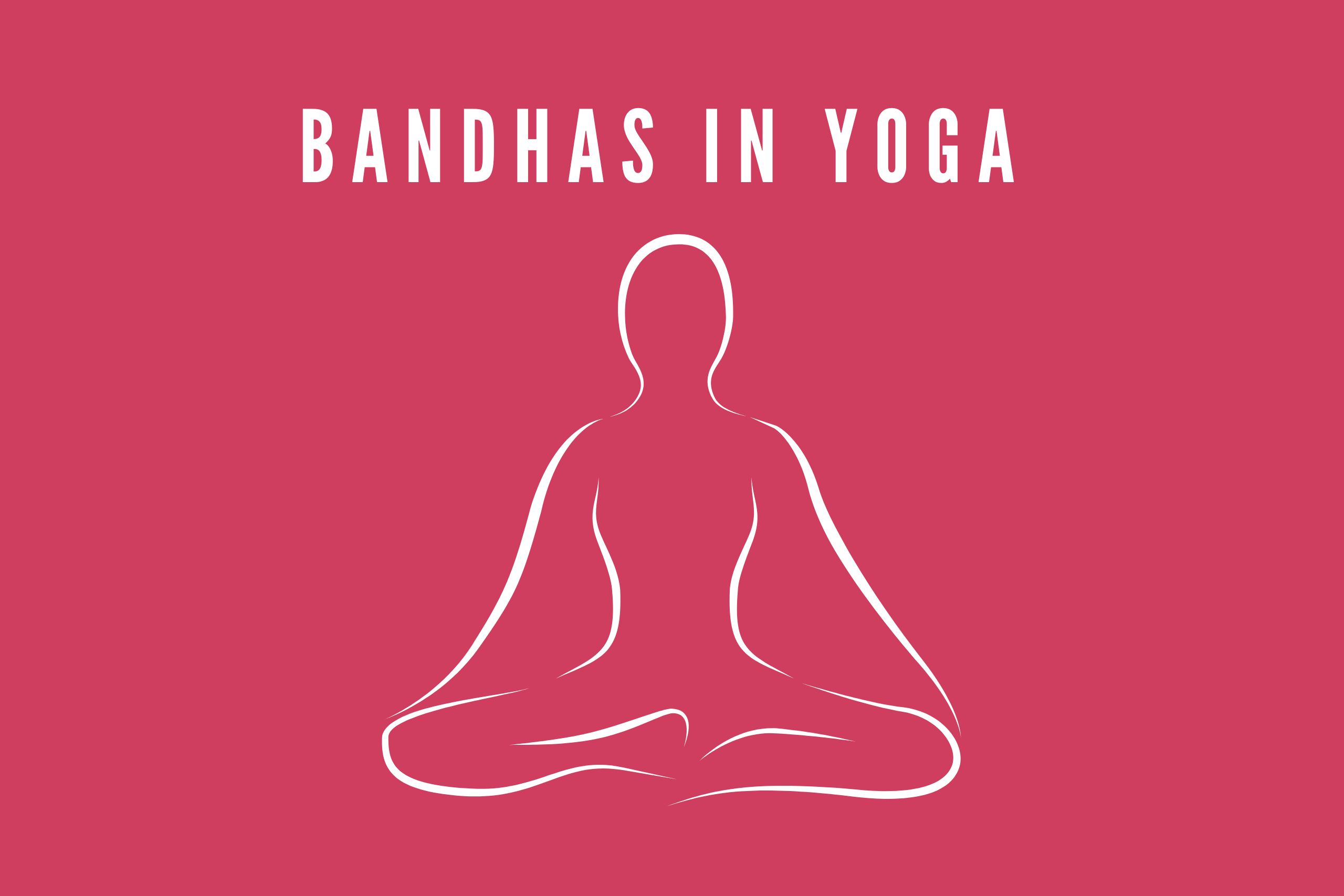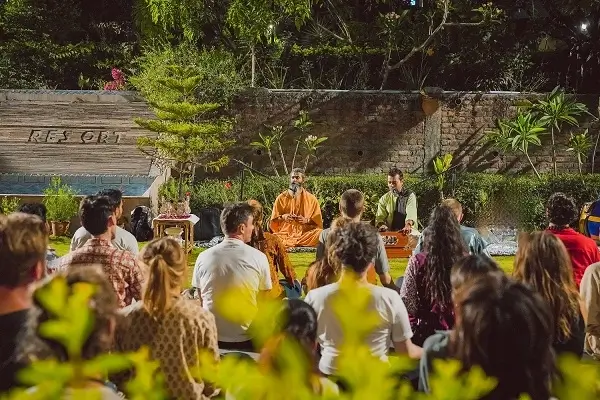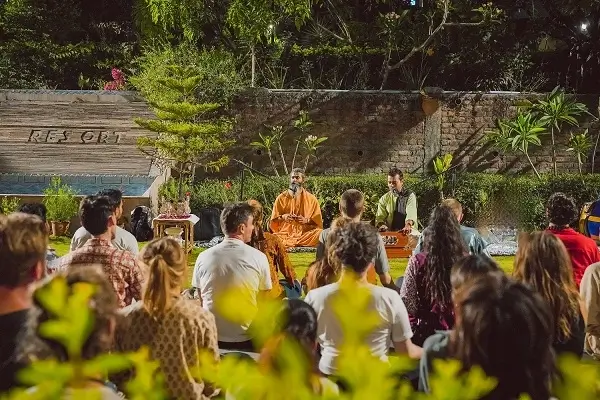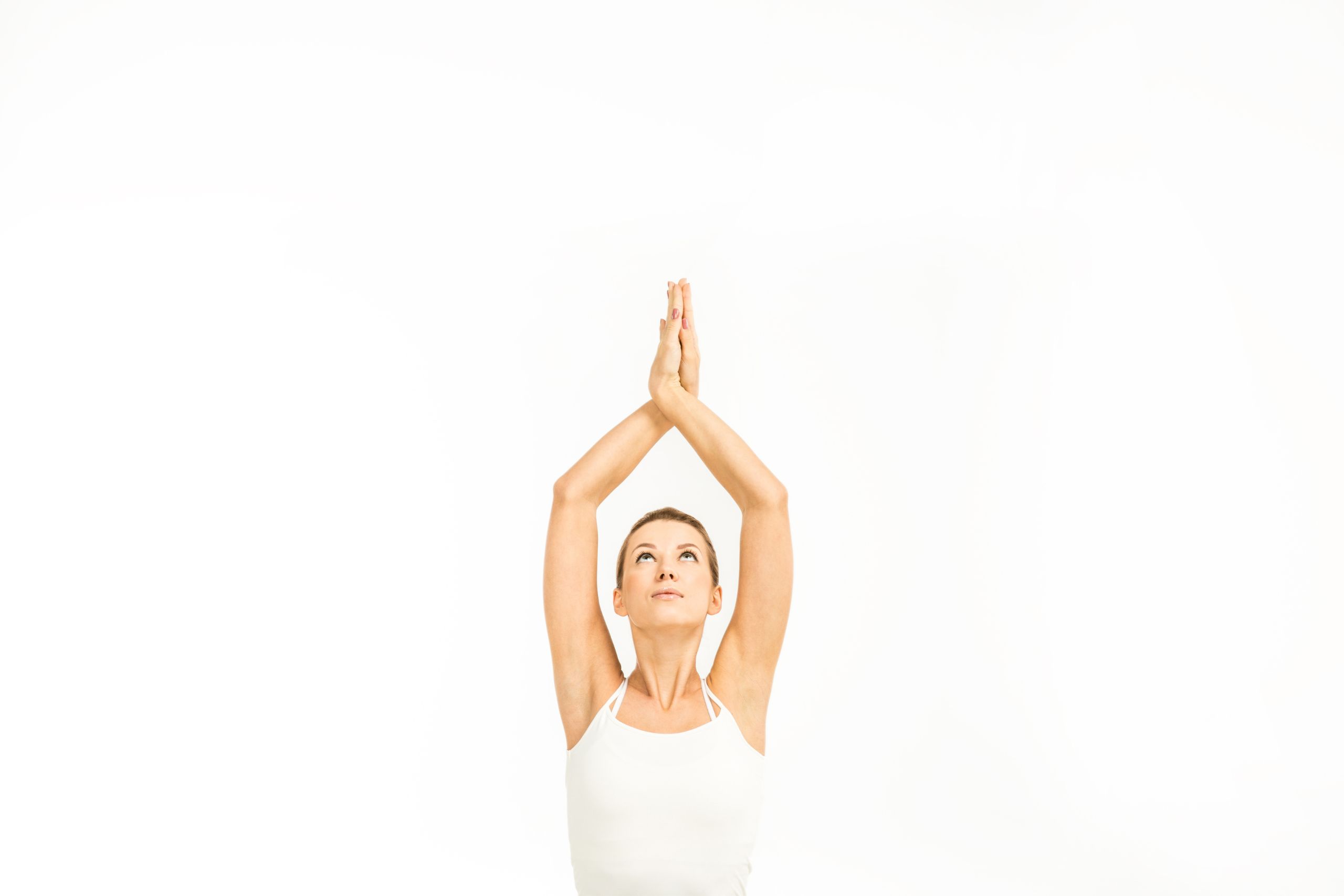Unlocking the Power Within: A Journey into Bandhas
Table of Contents
- 1. Bandha: A Simpler Explanation
- 2. How many Bandhas are there?
- 2.1. Mula Bandha
- 2.1.1. Benefits of Mula Bandha
- 2.1.2. Precautions: Who should avoid the practice
- 2.2. Uddiyana Bandha- Abdominal Lock
- 2.2.1. Benefits of Uddiyana Bandha
- 2.3. Jalandhara Bandha- chin lock
- 2.3.1. Why Practice Jalandhara Bandha
- 2.3.2. Precaution: Who should avoid the practice
- 2.4. Maha Bandha- Great Lock
- 2.4.1. Benefits of Maha Bandha Practice
- 2.4.2. Precaution: Who should avoid the practice
- 2.5. Can You Master The Art Of Bandhas Yourself?
Bandhas act as the soul of yogic practices and thus in the vast realm of Yogic practices bandhas still hold sacred and profound practices. Yogic traditions for decades have delved into the complexities of the internal locks and uncovered the transformative potential of both its spiritual and physical planes.
So, let's delve into the anatomy of the subject and find what exactly are bandhas, do they impact yogic practices, and what the benefits of the same. Dive and unravel the mystique exploration of the subject.
Bandha: A Simpler Explanation
Bandhas are energy locks or binds used in yoga practice that tighten or block specific body parts. Bandhas can also be referred to as energetic locks or seals by practitioners in the West. Essentially, yoga is predicated on the idea that Prana Shakti, a primordial cosmic energy that governs all biological systems, is a life force that flows through the human body.
Concentrated muscle spasms known as bandhas momentarily stop some parts of the body's blood flow.
In theory, unlocking the lock should improve circulation, and blood flow, eliminate dead cells, and strengthen and revitalize the affected organs. Bandhas are also said by practitioners to enhance single-point concentration and promote hormonal, metabolic, sexual, and digestive health. Bandhas have been a major part of yogic practices since their origination and now with the rising of yogic culture in Rishikesh through the yoga teacher training course, the inquisition of bandhas has arisen again.
Now that we have understood what bandhas are, let's examine how many bandhas there are and if it is for everyone to practice.
How many Bandhas are there?
Hatha yoga recognizes mainly four types of bandhas, and here is a detailed breakdown of each type which includes the benefits it yields, and precautions one must take while practicing it.
Mula Bandha
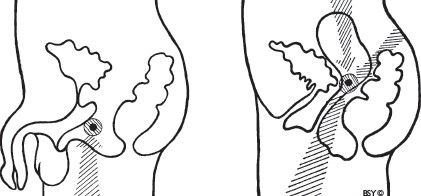
In yoga, mula bandha, also known as Moola Bandha, is a "pelvic seal" that is performed in tandem with mudras and pranayama. The term "bandha" means "bond" or "hold," while "mula" (root) denotes the base of the spine or coccyx. Tightening particular pelvic floor muscles and pulling them up and towards the navel—either on their own or in conjunction with breath retention—creates the mula bandha.
Benefits of Mula Bandha
In the yoga asana practice of mula bandha, the practitioner pulls the location of the Root Chakra. There are numerous advantages to this straightforward exercise, some of which are listed below:
-
Awareness and Focus: Mula Bandha aids in strengthening the ability to focus. Students must maintain concentration to hold and apply the lock; otherwise, they risk losing the ability to contract their muscles. Therefore, it aids in fostering the quick focus that teens, who are often misinformed and easily distracted, sorely need. Spiritually, the practice helps in the Kundalini awakening, the energy-force-power located at the base of the spine, and channeling the energy in Sushumna Nadi.
-
Stimulation and Organs: Mula Bandha tones the excretory and urogenital systems and activates the pelvic nerves. The Root Chakra is opened as a result of stimulation at the pelvic nerve, which offers the basis for life and aids in establishing a sense of stability and security. Simultaneously, the pressure in the pelvic region is beneficial to the reproductive system because it opens the Sacral Chakra (also known as the Swadisthana Chakra).
-
Balance and Emotions: Students feel more at ease and grounded when they perform the Mula Bandha since it is a grounding technique. One develops increased sensitivity and emotional expressiveness.
-
Others: Mula Bandha applied during the practice of asanas helps the practitioners to seek the balance they need to tackle arm balance and inversions. Through regular practice unstable menstrual periods can be regulated, heart rate and high blood pressure may be reduced, digestion is improved, and urogenital functioning harmonized.
Precautions: Who should avoid the practice
Mula bandha should also be avoided by women who are menstruating or pregnant. Since breath retention is a key component of bandhas, mula bandha should be avoided by anyone who is cautioned against holding their breath. Breath retention exacerbates anxiety, cardiovascular problems, and hypertension (high blood pressure).
Furthermore, Mula bandha should not be used in cases of chronic disorders, peptic ulcers, hernias, or digestive problems. If you are unsure about your health, go to a yoga instructor and your doctor to find out what is appropriate and safe for you.
Uddiyana Bandha- Abdominal Lock
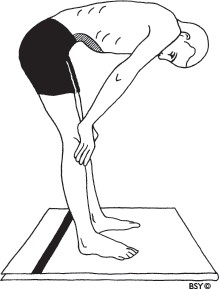
This bandha is characterized by a powerful upward movement of subtle energy through the core, which massages your interior organs. Your chest lifts higher and your abdominal muscles are pushed in during the Uddiyana bandha. In addition to raising the subtle energy, Uddiyana bandhas also amplify the energy from Jalandhara and Mula bandhas.
Benefits of Uddiyana Bandha
With so many advantages, the Uddiyana bandha ought to be performed daily. To stimulate the energy in the belly, this should be done before the start of the asanas. Let's talk about a few advantages of the Uddiyana bandha.
-
It increases blood flow to the brain and enhances abdominal blood circulation.
-
It gives the diaphragm and abdominal muscles flexibility and strength.
-
It clears the body of all toxins and revitalizes the digestive system.
-
It facilitates smooth bowel movements and cleanses and clears the digestive system.
-
The heart, lungs, solar plexus, and viscera are all toned and massaged by it.
According to Ayurveda, it awakens the Apana Vayu or lower abdomen energy. It combines with the energy of the other two bandhas and promotes the body's general growth. The mind is calmed and relaxed by it.
Also read: 11 Best Yoga Mantras for Yoga Teachers
Jalandhara Bandha- chin lock
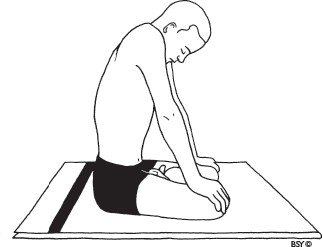
A yoga technique called chin lock regulates the body's flow of prana or life force energy. In general, a lock, or bandha as it is called in Sanskrit, is a contraction of the muscles that confines energy or breath in a certain section of the body.
The Sanskrit term Jalandhara bandha is another name for the chin lock. To prevent prana from leaving the body through energy channels called nadis and to reroute it to the Manipura chakra, the yogi practices the chin lock, which involves lowering the chin to the base of the throat.
Why Practice Jalandhara Bandha
The act of bringing the chin to the throat aids in concentration and raises awareness, rerouting our energies to reach our greatest potential. For this reason, this bandha is frequently employed in pranayama to improve breath retention. Yoga practitioners can get numerous advantages and special reasons for practicing the Jalandhara bandha.
-
Increases concentration: As is the case with many yoga poses, the purpose of this neck lock-in kriya practice is to slow down blood flow, calm the mind, and shift awareness from the outside to the within.
-
Ability to hold the breath for longer: More lung room and capacity aids in calming the nervous system, promoting a light-headed sensation, and preparing the mind for meditation in yoga.
-
Awakens inner energy: The Jalandhara bandha is a potent tool to clear any communication obstacles we may be experiencing in our lives since it opens the Vishuddhi Chakra.
-
Works the spinal cord: This bandha facilitates shoulder release and good alignment of the upper spine, which can help us safely transition into more advanced positions and variations of the poses.
Precaution: Who should avoid the practice
Students should stay away from this practice if they have injuries to their necks or shoulders. Yoga instructors must first teach pranayama to their students in order to improve their ability to hold their breath. Teachers are not able to start the practice without this. Pupils with poor body-breath synchronization may snap their necks or cause pain in their abdomens.
Yoga instructors must be careful to only teach this to pupils who are intellectually and physically aware of their body, breath, and mind. Jalandhara Bandha should not be practiced by students with cervical spondylosis, high intracranial pressure, vertigo, high blood pressure, or other heart-related conditions, or breathing issues.
The heart is strained by prolonged breath retention even though the chin lock lowers blood pressure. If you experience any vertigo or dizziness, stop practicing. Even though these mothers are skilled in their asanas and pranayama, they should refrain from holding their breath during pregnancy. Therefore, they should refrain from engaging in this conduct. If not, it is a good idea to carry out the practice while being supervised by a qualified tutor.
Maha Bandha- Great Lock
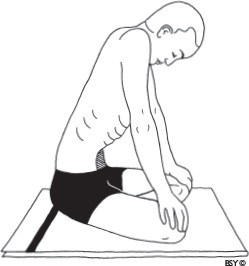
Maha Bandha is described in both the Hatha Yoga Pradeepika and the Gheranda Samhita as the conqueror of death and aging. Additionally, by engaging in this Bandha practice, the yogi's every wish is granted. Maha translates to "Great." All three of the previous Bandhas are combined in this Bandha.
It is crucial to realize right away that mastery of this Bandha requires years of practice. Huge physical and mental advantages arise from holding this Bandha for a few seconds. After years of practice, one can develop some mental and physical abilities like clairvoyance and levitation.
Benefits of Maha Bandha Practice
Maha Bandha is an all-inclusive yoga practice with many physical, spiritual, and psychological advantages. Exercise improves all of the body's essential processes, including thyroid gland regulation, digestive system efficiency, and respiratory system effectiveness.
This exercise improves lung capacity and breathing quality in addition to increasing metabolism and facilitating better digestion. From a spiritual perspective, it helps awaken and regulate energy, which raises consciousness. In terms of emotions, it fosters emotional stability and mental clarity, resulting in a feeling of inner balance and tranquillity.
Precaution: Who should avoid the practice
During menstruation and pregnancy, bandhas—especially Uddiyana, Mula, and Maha Bandha—should be avoided. It should be avoided by anyone with heart problems or blood pressure issues. Additionally, people with hernias, intestinal problems, or stomach ailments ought to refrain from the practice.
Also advised against the technique is anyone who suffers from panic attacks or anxiety problems. Avoid using excessive force when you are practicing. Bandhas is a very delicate and gentle exercise once you know how to apply it. Muscle contractions or undue effort should be avoided.
Can You Master The Art Of Bandhas Yourself?
Bandhas are normally introduced to yogi in their intermediate-advanced practice primarily due to the medical and physical control they demand. While extremely beneficial, Bandhas can aggravate conditions when not practiced correctly. Bandhas should, therefore, only be learned and practiced under the guidance of certified, experienced yoga teachers under a formal yoga teacher training setup.
After gaining practice, one can begin to apply it while practicing Shat Kriyas (cleansing techniques), Pranayama (breathing exercises), and even Asanas (postures). It does take immense practice to be able to apply it to other practices, for more such informative writeups on the multiple yogic practices visit us at Heart of Yoga Institute in Rishikesh.
